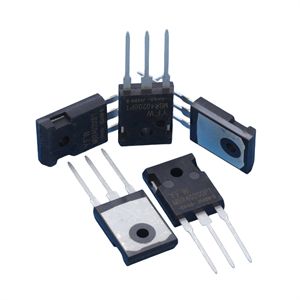Date:2024-11-15 Categories:Product knowledge Hits:374 From:Guangdong Youfeng Microelectronics Co., Ltd
Silicon controlled rectifier (SCR) is the abbreviation for silicon controlled rectifier. There are several types of thyristors, including unidirectional, bidirectional, switchable, and optically controlled. They have the advantages of small size, light weight, high efficiency, long lifespan, and convenient control. They are widely used in various automatic control and high-power power conversion applications such as controllable rectification, voltage regulation, inverter, and contactless switch.
1、 Unidirectional thyristor is a controllable rectifier electronic component that can switch from off to on under the action of external control signals. However, once it is turned on, external signals cannot turn it off, and it can only be turned off by removing the load or reducing the voltage at both ends. Unidirectional thyristor is a four layer three terminal semiconductor device composed of three PN junctions PNPN. Compared with diodes with one PN junction, the forward conduction of unidirectional thyristor is controlled by the gate current; Compared with a transistor with two PN junctions, the difference is that the thyristor does not amplify the control electrode current.
2、 A bidirectional thyristor has the characteristic of alternately conducting and turning off in two directions. A bidirectional thyristor is essentially two anti parallel unidirectional thyristors, which are semiconductor devices composed of four PN structures formed by NPNPN five layer semiconductors and have three electrodes. Due to the symmetrical structure of the main electrode (both leading out from the N layer), its electrodes are not called the anode and cathode respectively like unidirectional thyristors. Instead, the electrode closest to the control electrode is called the first electrode A1 and the other is called the second electrode A2. The main disadvantage of bidirectional thyristors is their low ability to withstand voltage rise rates. This is because when the bidirectional thyristor completes conduction in one direction, the carriers in each layer of the silicon wafer have not yet returned to the cutoff state, and corresponding protective measures must be taken. Bidirectional thyristor components are mainly used in AC control circuits, such as temperature control, lighting control, explosion-proof AC switches, and DC motor speed regulation and commutation circuits.

Previous: Classification, Structure, and Principle of MOSFET